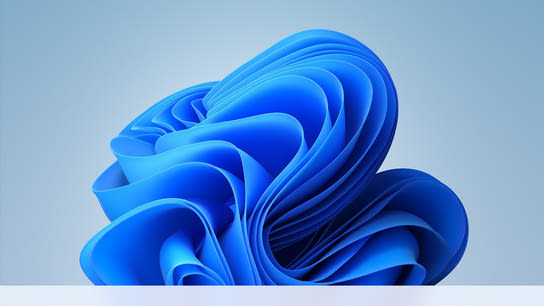Earlier , Microsoft pushed a promotional message to early adopters of Windows 11. The promo intended to promote the upcoming operating system’s integration with Microsoft Teams. Instead, it caused Explorer (the Windows desktop shell) to stop responding and left users without a working Start menu and taskbar.
I was caught up in this problem after restarting my laptop to complete the installation of an unrelated software. It was annoying and frustrating to be left with a broken Windows desktop, but this is what I signed up for as a Windows Insider (early adopter).
Microsoft has acknowledged that there’s an issue and posted a workaround for affected customers. The workaround requires users to open the Registry Editor (regedit) through the Task Manager to make some changes. The company didn’t discuss the problem in detail, however.
I took a closer look at what got downloaded and caused the Windows desktop shell to become unresponsive. Microsoft customers on Twitter and Reddit quickly shared ways to work around the problem and restore the Windows shell. The successful ideas all involved different methods that made the device unable to communicate with Microsoft servers. It became clear that the issue was caused by one of the many cloud services built into Windows.
The problem wasn’t caused by an update delivered through Windows Update. (That would have been more understandable.) Instead, it was caused by a small file downloaded by a Windows component called IrisService. Iris is a part of Windows Spotlight (the Bing wallpaper of the day; and tips, promotions, and suggestions on the Lock screen).
Based on the Microsoft-provided workaround, I narrowed the problem down to a registry key that contained a serialized JSON blob. The blob contained an advertisement for Microsoft Teams. The messaging and imagery in the promotion were identical to the panel you get when you press the Windows key + C on a Windows account not already set up with Teams. It’s unclear if it’s this exact promotion, however.
There’s an enormous elephant in the room, though: how Microsoft could have let this happen? Yes, this is a beta build for early adopters. Yes, rough edges and productivity losses are expected.
However, that doesn’t answer why the Windows shell was so poorly architected in the first place. How come that it would stop responding just because of one failed cloud service? It’s not a crucial cloud service either, and the computer became useless because of a single JSON blob with an advertisement.
Ads in Windows are important to Microsoft. They’re nowhere to be found on the priority lists of Microsoft’s customers. We don’t want them there at all! Millions of people depend on Windows every day, and it simply needs to be more robust than this.
Windows 11 is due for release in . However, I say it needs to go back on the drawing board. It needs to be rearchitected to decouple it from the cloud. The design requirement is clear: unimportant cloud-dependent systems must be isolated from the core operating system so that they can’t bring the Windows shell to its knees.
I’m not saying Microsoft needs to remove its account, cloud gaming, entertainment, software delivery, and other cloud services. Some of these cloud services do add value to their customers. However, the whole computer can’t grind to a halt over a tiny problem with an unimportant nuisance of a “feature”.
